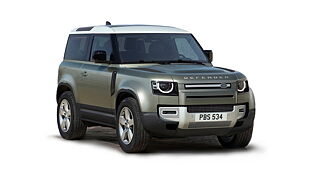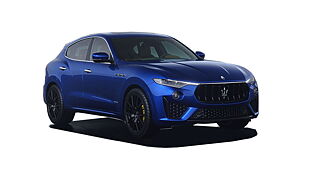Jaguar F-Type [2013-2020] SVR Coupe
- F-Type [2013-2020]
- Specs & Features
- Variants
- Colours
- User Reviews
Variant
Jaguar F-Type [2013-2020] SVR Coupe Review
The SVR is a faster, louder and a more precise version of the already mad Jaguar F-Type R. It is the fastest car Jaguar Land Rover makes and 0-100 time of 3.5 seconds and a top speed of 322kmph is standing proof of that. Unveiled in 2016 at the Geneva motorshow, the F-type SVR was the first car from the SVO performance division and now for 2018 they have done further enhancements to make the car even better. I got to sample the car in Jaguar Land Rover Gaydon proving grounds in Warwickshire, England.
What is it?
How is it on the inside?
How does it drive?
Should I buy one?
Where does it fit in?
Specifications & Features
- Specifications
- Features
- Specifications
- Features
Specifications
Engine & Transmission
Engine5000 cc, 8 Cylinders In V Shape, 4 Valves/Cylinder, DOHCFuel TypePetrolMax Power (bhp@rpm)567 bhp @ 6500 rpmMax Torque (Nm@rpm)700 Nm @ 3500 rpmMileage (ARAI)10.85 kmplDrivetrainAWDTransmissionAutomatic - 8 Gears, Paddle Shift, Sport ModeEmission StandardBS 4Turbocharger / SuperchargerSuperchargedOthersIdle Start/StopValve/Cylinder (Configuration)4, DOHCDimensions & Weight
Length4475 mmWidth1923 mmHeight1308 mmWheelbase2622 mmGround Clearance113 mmKerb Weight1720 kgCapacity
Suspensions, Brakes, Steering & Tyres
Features
Exterior
Braking & Traction
Safety
Comfort & Convenience
Lighting
Locks & Security
Doors, Windows, Mirrors & Wipers
Entertainment, Information & Communication
Mobile App Features
Storage
Seats & Upholstery
Instrumentation
Manufacturer Warranty
Other F-Type [2013-2020] Variants
| Variants | Price | Specifications | |
|---|---|---|---|
Rs. 2.65 Crore | 2 Person, AWD, 700 Nm, 113 mm, 1720 kg, 310 litres, 8 Gears, No, 70 litres, No, No, Front, 4475 mm, 1923 mm, 1308 mm, 2622 mm, 700 Nm @ 3500 rpm, 567 bhp @ 6500 rpm, Yes, Yes (Automatic Climate Control), Front Only, 1, Reverse Camera with Guidance, Yes, Yes, 1, Yes, Yes, No, 4 Airbags (Driver, Passenger, Driver Side, Front Passenger Side), Yes, 1, BS 4, 2 Doors, 10.85 kmpl, Petrol, Automatic, 567 bhp | Get Offers from Dealers |
Similar Cars
Explore Used Jaguar F-type
Colors
Reviews
- (1 Ratings) 1 Reviews
5.0/5
- Its my dream carThis car is amazing and the engine is Very powerful ne dizine is too good. I love it car. *Riding experience. Very good. Loving... Good experience Car colour is amazing Pros and consRating parameters(out of 5)5
Exterior
5Comfort
5Performance
5Fuel Economy
5Value For Money
About the ReviewerPurchase UsedDriven forHaven't driven itWas this review helpful?00
- Home
- Jaguar Cars
- F-Type [2013-2020]
- SVR Coupe

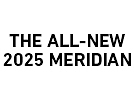

![Jaguar F-Type [2013-2020] SVR Coupe Jaguar F-Type [2013-2020] SVR Coupe](https://imgd.aeplcdn.com/664x374/ec/0E/44/10848/img/m/Jaguar-F-Type-Right-Front-Three-Quarter-50881_ol.jpg?t=141933673&t=141933673&q=80)
![Jaguar F-Type [2013-2020] Right Front Three Quarter Jaguar F-Type [2013-2020] Right Front Three Quarter](https://imgd.aeplcdn.com/664x374/ec/0E/44/10848/img/l/Jaguar-F-Type-Right-Front-Three-Quater-18593.jpg?v=201711021421&q=80)
![Jaguar F-Type [2013-2020] Rear View Jaguar F-Type [2013-2020] Rear View](https://imgd.aeplcdn.com/664x374/ec/0E/44/10848/img/l/Jaguar-F-Type-Rear-view-18594.jpg?v=201711021421&q=80)
![Jaguar F-Type [2013-2020] Left Front Three Quarter Jaguar F-Type [2013-2020] Left Front Three Quarter](https://imgd.aeplcdn.com/664x374/ec/0E/44/10848/img/l/Jaguar-F-Type-Left-Front-Three-Quarter-18595.jpg?v=201711021421&q=80)
![Jaguar F-Type [2013-2020] Front View Jaguar F-Type [2013-2020] Front View](https://imgd.aeplcdn.com/664x374/ec/0E/44/10848/img/l/Jaguar-F-Type-Front-view-18592.jpg?v=201711021421&q=80)
![Jaguar F-Type [2013-2020] Exterior Jaguar F-Type [2013-2020] Exterior](https://imgd.aeplcdn.com/664x374/cw/ec/10848/Jaguar-FType-Exterior-151592.jpg?wm=0&q=80)
![Jaguar F-Type [2013-2020] Exterior Jaguar F-Type [2013-2020] Exterior](https://imgd.aeplcdn.com/664x374/cw/ec/10848/Jaguar-FType-Exterior-151591.jpg?wm=0&q=80)
![Jaguar F-Type [2013-2020] Exterior Jaguar F-Type [2013-2020] Exterior](https://imgd.aeplcdn.com/664x374/cw/ec/10848/Jaguar-FType-Exterior-151590.jpg?wm=0&q=80)

